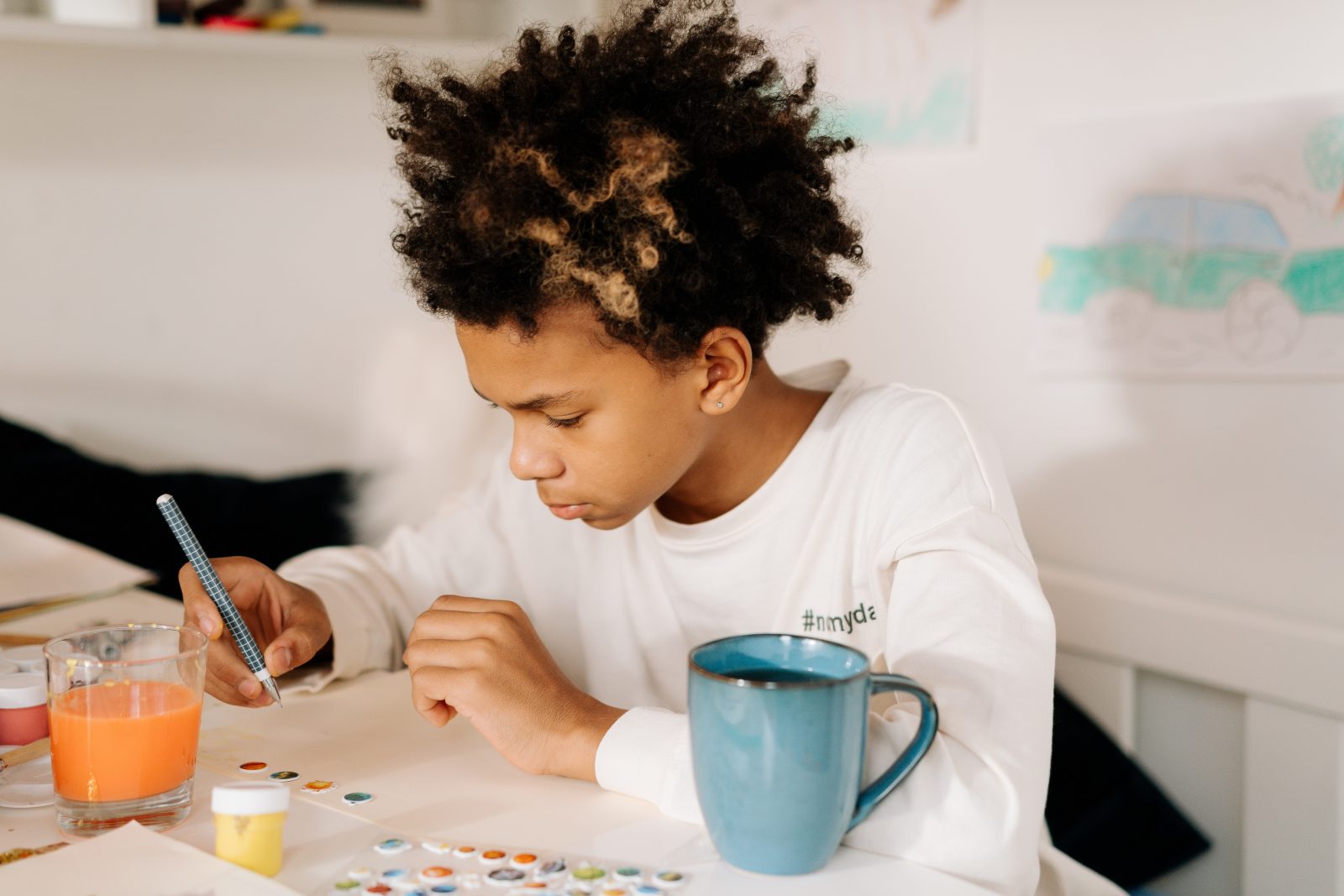Expand Your Child’s Creativity

What have some children lost 70% of by age 10? Creativity
by Lori Son
We hear the word creativity all the time and want our children to be creative, but what is it? One might say that creativity is the capacity for original thought, new connections, adaptive reasoning, and novel solutions. Research shows that if nurtured and supported during childhood, creativity has positive and far-reaching implications for fulfilling adult potentiality. Also noted is the thought that creativity is imperative for success in this global society where change is radical, constant, and accelerating.
This leaves parents with a question to contemplate … How can I stimulate my child’s creative capacities and nurture the gift that has been given so that creativity is not lost? The good news is you are probably already encouraging creativeness in your daily routine with your child, but here are a few suggestions that will have your child thinking in no time.
Teachable Moments
As sad as it sounds, the reality is that much of our time with our children is spent running from place to place. One quick and easy way to stimulate creativity is to take advantage of all teachable moments, big or small. By this I am referring to the drive from home to school, the time you visit with your child while you push the shopping cart, or even the conversation you have with your little one during bath time. Children love to ask questions, and it is our job as parents to explain. When children ask questions, encourage them to extend past the current question they asked. Guide their curiosity and lead them to ponder further questions. Originality can also motivate creative thinking and can be fostered in daily activities. If one child comes up with a unique way of playing a game or solving a common problem, teach your child that it is okay to see things his or her way, even if his or her ideas are different from everyone else’s.
Playtime
Playtime for children is so important and serves as another way to prompt creative thinking. As hard as it is for us organized moms, let the kids get messy. Kids love to build, paint, and make boats and forts out of every sheet in the linen closet, and that’s okay! This is when children will create mental pictures and ideas in their minds and let their imaginations run wild. Most preschoolers love nothing more than for you to sit in the floor and slip off into a fairy tale or super hero world with them. What could be simpler than to use this family time to promote abstract thinking and elaboration? Have your child describe what the princess’ castle looks like or what the super hero’s mission is, and encourage him or her to explain in detail.
Inexpensive
Stimulating creativity does not have to be expensive. In fact, sometimes the less you buy, the more your child has to use his or her brain. Children benefit from having to come up with different ways to use materials. In my gifted and talented classes, most of the items my students use to solve problems are very inexpensive and can be found in most households. My students cannot wait to be given the opportunity to create a structure out of empty paper towel rolls, toothpicks, straws, pipe cleaners, and other hodgepodge items. I encourage you to place some of these items in a box, depending on age appropriateness, and let your child start designing. Another great item to keep handy that is so inexpensive is plain white paper. Coloring in coloring books is great for fine motor skills, but add a little plain paper to the mix to allow your child to express his or her own thoughts while drawing.
Hands-off
The last and most challenging part of stimulating creativity for parents is taking a step away and letting your children figure out solutions to problems on their own. This is so hard for parents who want the very best for their child, but it will pay off in the long run. Let your child make his or her own decisions within reason when you can. Try to let your child use his or her ideas to complete projects even if you don’t think it is exactly right. You will be amazed by what your child will gain from you taking a step back. When your child enters the school setting, go a step further by taking some of the focus off just making a certain grade in subjects, and put more emphasis on the understanding of the ideas and skills taught. Grades are important, but gaining knowledge from the material taught is what will prepare your child for success down the road. Finally, let your child fail sometimes. I can’t help but remind my students that it was Milton Hershey’s failures in life that led him to make the famous Hershey’s chocolate we love to eat today!


 Lorie Son serves as the XLT (gifted and talented) teacher for Pleasant Grove Intermediate School. She holds a Bachelor’s of Science and Interdisciplinary Studies Degree and a Master’s of Science and Interdisciplinary Studies Degree from Texas A&M, Texarkana. She began her career in education at Pleasant Grove Elementary in 2002. She and her husband, Scotty, have a four-year-old daughter, Addie, and six-month-old twin girls, Laney and Piper.
Lorie Son serves as the XLT (gifted and talented) teacher for Pleasant Grove Intermediate School. She holds a Bachelor’s of Science and Interdisciplinary Studies Degree and a Master’s of Science and Interdisciplinary Studies Degree from Texas A&M, Texarkana. She began her career in education at Pleasant Grove Elementary in 2002. She and her husband, Scotty, have a four-year-old daughter, Addie, and six-month-old twin girls, Laney and Piper.






